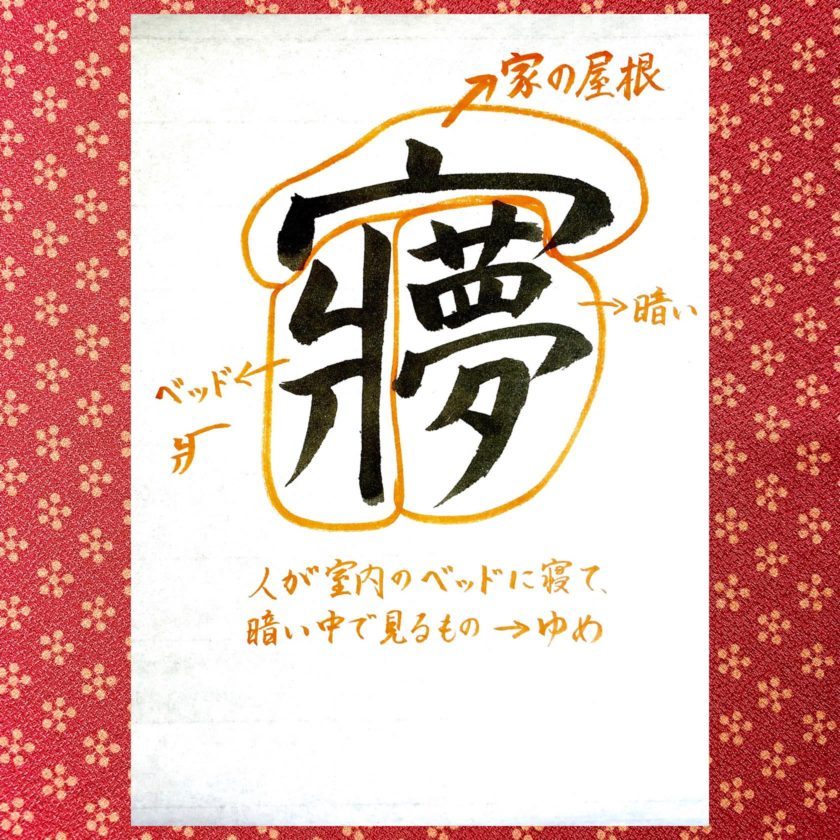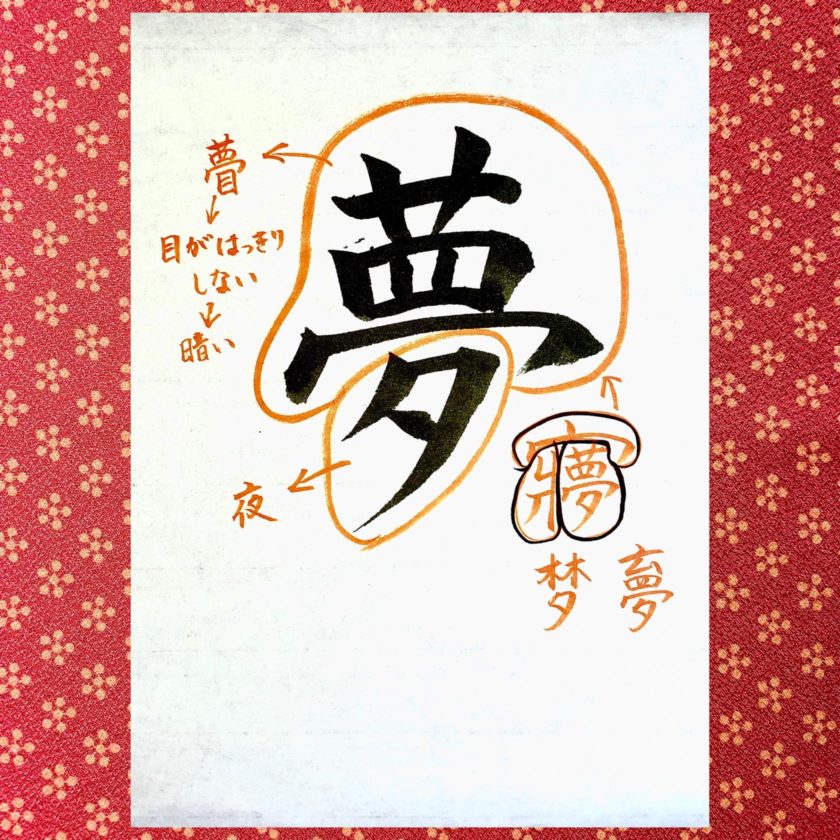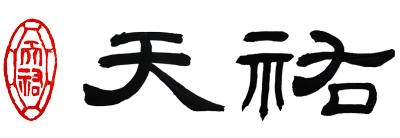【夢】という漢字を因数分解してみました。
本来の【ゆめ】の漢字は下の画像のものだったそうですが、こんな漢字は見たことがないですね。
この漢字を分解すると、3つのパーツに分けることができます。

宀(うかんむり):家などの建物の屋根
爿:寝台・ベッド
夢:暗い
人が家のベッドに寝て、暗い中で見るもの、即ち【ゆめ】という意味になったそうです。
この漢字一文字に、人が夢を見る様子が詰め込まれています。
これこそ、漢字が持つ面白さ、醍醐味ですね!
それにしても【夢】が元々“暗い”という意味だったとは、驚きましたね!
では夢=暗いとはどういうことなのか?
更に因数分解してみました。

夢は瞢と夕の2つに分けることができます。
瞢:目がはっきりしない
夕:夜
夜は目がはっきりしない、ということで、“暗い”という意味なんですね。
ちなみに夢の部首は、“くさかんむり”かと思いきや、“夕:ゆうべ”です。
元々、本来の【ゆめ】(最初の画像の字)と【夢】は別の字で、後世になって本来の【ゆめ】の字が廃れてしまったので、【夢】を【ゆめ】という意味で用いられるようになったそうです。
この【夢】の訓読みを“ゆめ”としているのは、元々の【ゆめ】の字の仮借になります。
仮借についてはこちら
実際、日本語のキーボードでは、訓読みの“ゆめ”でも音読みの“ム”でも出てきません。
中国語に詳しい方から聞いた話ですが、本来の【ゆめ】の漢字は、広東語のキーボードでは出るそうですよ。
今回の因数分解も新たな発見があり、良い勉強になりました。
I tried factoring the kanji [夢(Yume):dream].
It seems that the original [夢dream] kanji was from the first image, but I’ve never seen it.
When this Kanji is factored, it can be divided into three parts.
宀:Roofs of buildings such as houses
爿:bed
夢:dark
It means that people sleep on their beds at home and see what they see in the dark, that is, “dream.”
This one Kanji character is packed with how people dream.
This is the fun and charm of kanji!
Even so, I was surprised that “dream” originally meant “dark”!
So what does dream = dark mean?
I tried to factor it further.
夢 can be divided into two parts, 瞢 and 夕.
瞢:My eyes are not clear
夕:evening
The fact that the eyes are not clear at night means “dark”.
夢 radical is “夕:evening”
Originally, the original [Yume] (the character in the first image) and [夢] are different characters, and the original [Yume] character was abolished in posterity, so [夢] is called [Yume]. It seems that it has come to be used in the meaning.
In fact, the Japanese keyboard doesn’t show the kun reading “Yume” or the on reading “Mu”.
I heard from a person who is familiar with Chinese, but it seems that the original [Yume] kanji appears on the Cantonese keyboard.
I had a new discovery about this factorization and it was a good study.
